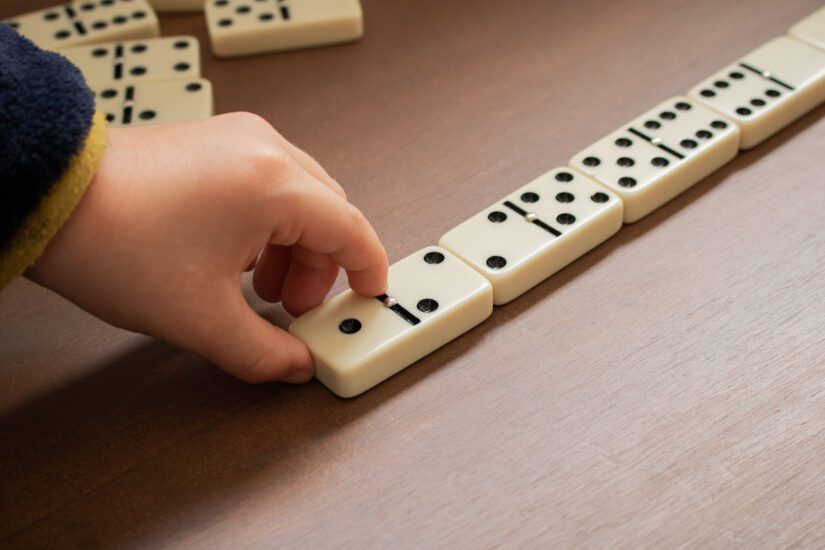Fun educational activities can be a great way to teach math to children, and dominoes is a long-standing family favorite. Discover why dominoes is such an engaging math game for young learners!
Tiles that teach
One of our favorite methods for teaching math concepts to kids is by playing old-school dominoes. Dominoes is already an exciting game enjoyed by adults around the world, and we like the fact that traditional dominoes are incredibly accessible for students (and families) of all ages. No large investment is required – a set of traditional dominoes can be had for around $10, and the only optional accessories are tile racks. These are also inexpensive, and we recommend using them so students can focus on the numbers throughout the game.
Best of all, playing dominoes is a completely standalone activity – no screens or electricity required! It’s for these reasons that dominoes can often be found in classrooms. Here are a couple of links to everything you need:
Tutor Doctor Tip: As a whole, traditional tabletop games are an excellent way to encourage kids to “unplug” from their electronic devices every now and then. As many students are currently on spring break (and with summer vacation arriving soon), we encourage parents to check out Balancing Your Child’s Screen Time During the Holidays.
The math is in the pips
So, how do dominoes actually teach math? Well, the most basic form of dominoes involves matching numbered tiles to one another. Players start with a set number of tiles, and the goal is to get rid of your tiles by placing them down. If a match is not available, you have to draw from the unused tiles (called the “boneyard”) until a match is acquired. That’s pretty much it! Here’s a quick refresher on how to play classic dominoes.
Within the simplicity of dominoes, however, a lot is actually happening. The dots on these tiles, known as pips, encourage kids to practice mental math and number recognition. If one player wins the game by discarding all of their dominoes, the pips on all the other player’s tiles are tallied up – and these points are given to the winner. As a result, students learn to recognize a basic strategy of dominoes – playing high number pieces first is generally a smart idea because if you lose (and those pieces are still on your rack) those points will be awarded to your opponent.
We also like other versions of classic dominoes. A popular variant called “all fives” (also known as Muggins) is similar, except that players must tally the total of the edge pieces throughout the game. If this quantity adds up to a multiple of five (5, 10, 15, etc) the player immediately receives those points. In the below example, the most recent player would receive 20 points (6+6+4+4):
By Bermicourt – Own work, CC BY-SA 4.0, https://commons.wikimedia.org/w/index.php?curid=98616731
A variation of this game called “all threes” has essentially the same rules except with the goal of playing multiples of three (3, 6, 9, 12, etc.) These variations are some of the most effective ways to teach students factoring, mental math, and multiplication skills. And the best part is – most students are having so much fun they don’t even realize they’re practicing math problems!




